I’ve grown up in Scotland and yet there is still so much of the country that is unknown to me, so many places that are still on my ‘must visit’ list.
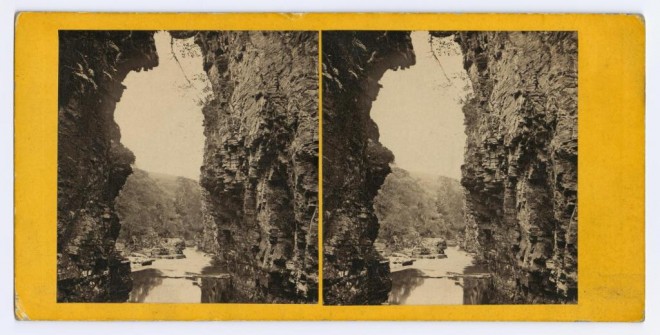
As a child my parents ensured we regularly made it up many hills, mountains and a number of munros. After a little encouragement, we were all soon happy to be outside and anywhere that had a loch or a waterfall was always a favourite.
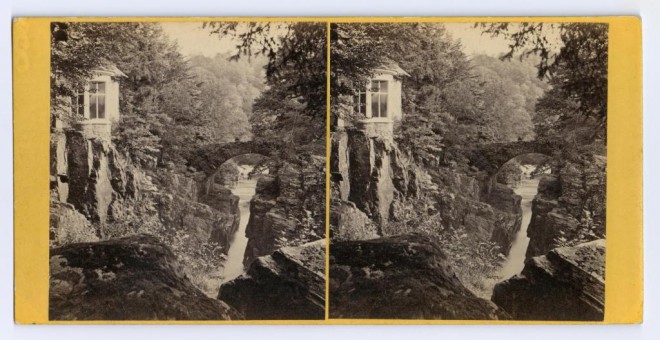
Now I love seeing friends’ photographs from weekends spent exploring and holidays hopping over Scottish islands. It always hits me how beautiful the natural landscape of the country we live in is and reminds me of these early family days spent in the outdoors.
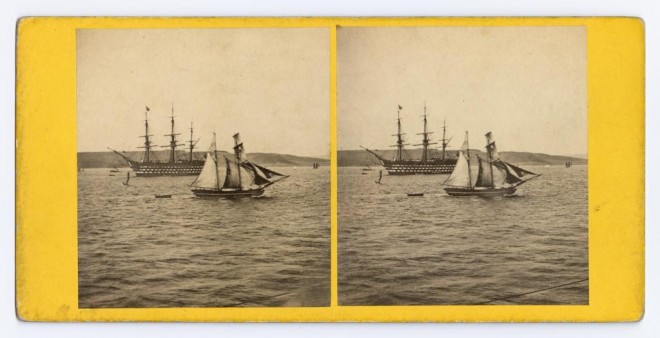
Last year, when the Photography: A Victorian Sensation exhibition was showing at the National Museum of Scotland, I flicked through many of the stereocard photographs and there were a few stunning places that caught my eye. In fact, I regularly take some virtual adventures north via Instagram and as I look again at these stereographs, it’s interesting how this early photography format resembles Instagram’s original square formatting.
1. The Island of Staffa
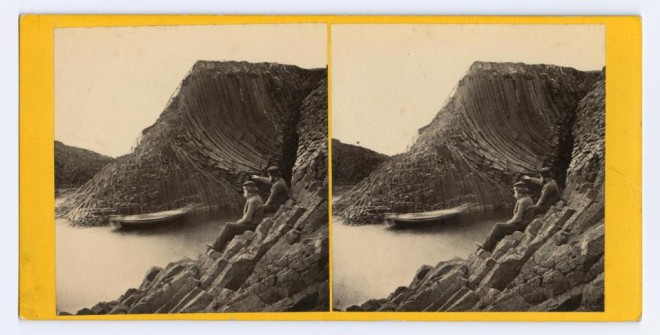
The jutting nature of these rocks are just incredible: they look like something from another world, or the place where lots of pieces of earth have collided in a mighty clash. This photograph from c.1860 -1870 shows two men and a boat outside Clamshell Cave on the east coast of the island of Staffa. This uninhabited volcanic island lies about six miles west of the Island of Mull and is home to hundreds of seabirds. I like how this photograph captures the people in landscapes photographs, as I think it gives a scene a sense of time and place.
2. Fingal’s Cave, Staffa
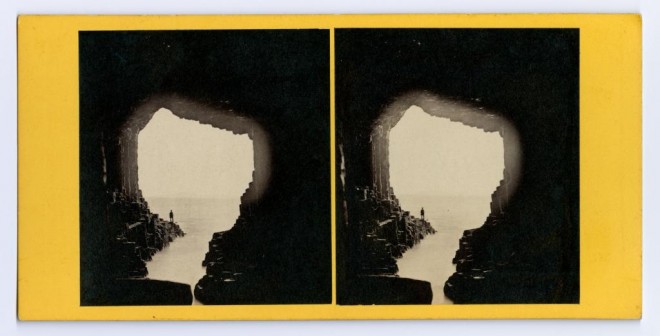
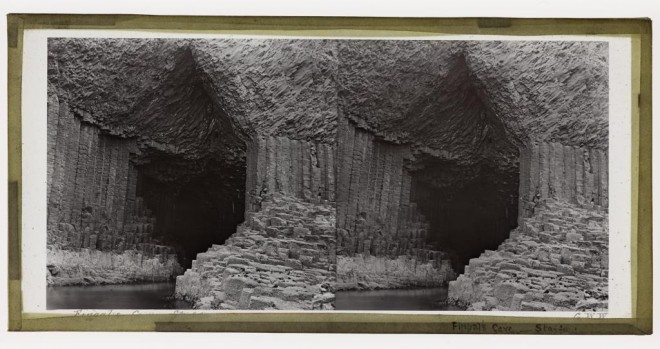
3. Glencoe
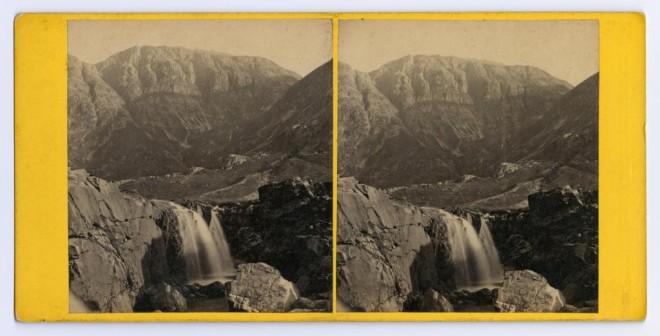
4. The Old man of Storr, Skye
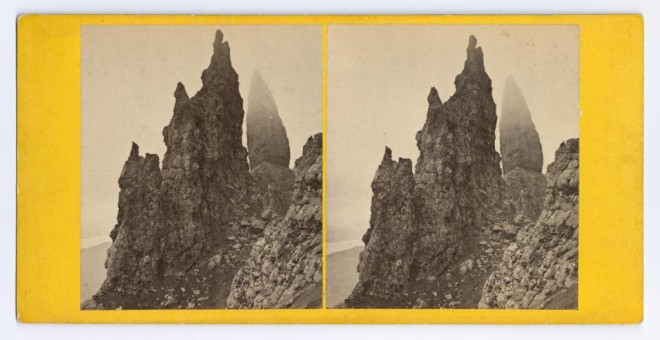
5. The Clett, Thurso
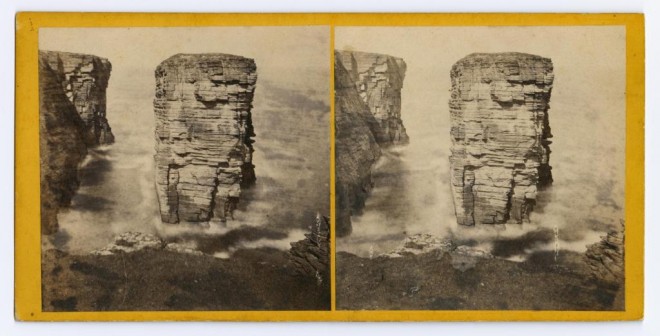
This solitary sea stack on the northern shore of Scotland looks incredibly impressive in this moody stereocard from the 1870s. It’s stunning in its both natural and strange architectural footprint that it stamps firmly into the sea.
